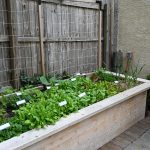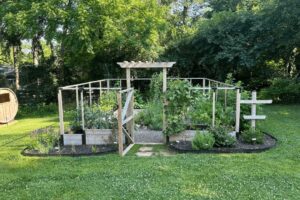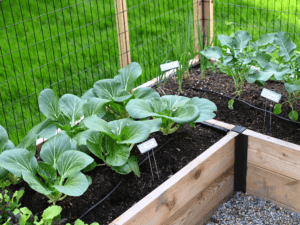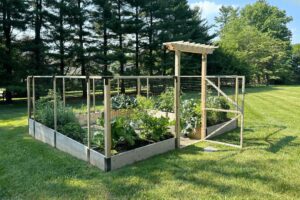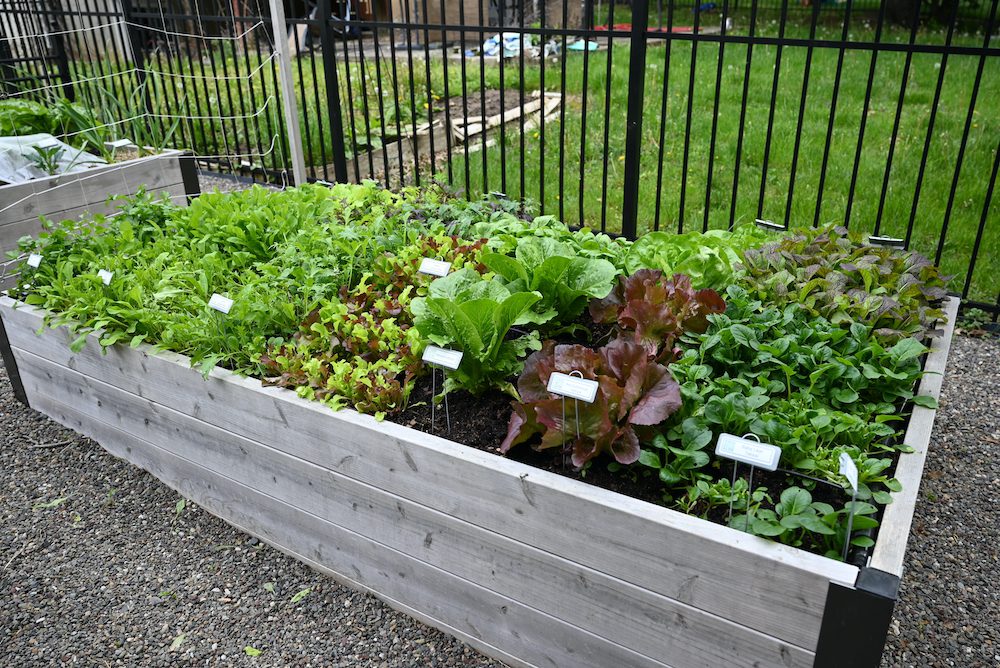
[et_pb_section fb_built=”1″ admin_label=”section” _builder_version=”4.16″ da_disable_devices=”off|off|off” global_colors_info=”{}” da_is_popup=”off” da_exit_intent=”off” da_has_close=”on” da_alt_close=”off” da_dark_close=”off” da_not_modal=”on” da_is_singular=”off” da_with_loader=”off” da_has_shadow=”on”][et_pb_row admin_label=”row” _builder_version=”4.16″ background_size=”initial” background_position=”top_left” background_repeat=”repeat” global_colors_info=”{}”][et_pb_column type=”4_4″ _builder_version=”4.16″ custom_padding=”|||” global_colors_info=”{}” custom_padding__hover=”|||”][et_pb_text _builder_version=”4.27.2″ _module_preset=”default” text_text_color=”#000000″ link_font=”|700|||on|||#000000|” link_text_color=”#000000″ header_2_line_height=”1.5em” header_2_font_size_tablet=”” header_2_font_size_phone=”23px” header_2_font_size_last_edited=”on|phone” global_colors_info=”{}”]
Starting a home vegetable garden is exciting, but it can also be a bit overwhelming, especially with all the different setup options out there. Raised beds are an ideal choice for many beginners because they simplify so much of the growing process, making it easy to get started and see results. Unlike in-ground gardens or containers, raised beds offer unique benefits that help your plants thrive and make gardening more enjoyable. Whether you’re working with a small space, a sloped yard, or just want to make your first gardening experience easier, raised beds have you covered. Let’s explore why raised beds are one of the best ways to grow your own food in your own backyard!
[/et_pb_text][et_pb_text _builder_version=”4.27.2″ _module_preset=”default” text_text_color=”#000000″ link_font=”|700|||on|||#000000|” link_text_color=”#000000″ header_2_line_height=”1.5em” header_2_font_size_tablet=”” header_2_font_size_phone=”23px” header_2_font_size_last_edited=”on|phone” global_colors_info=”{}”]
Garden Materials That Last
Quality materials are critical to a successful, long-lasting garden, and raised beds built with durable wood like cedar or hemlock offer impressive longevity. Professionally-installed raised beds are often treated with natural, food-safe preservatives that allow them to withstand weather, rot, and pests, lasting for 10 to 15 years or more. In contrast, DIY kits or cheaper materials like thin lumber or metal can warp or degrade quickly, meaning you might need to replace them sooner than expected.
When choosing materials, consider this: sturdy wood retains soil moisture better, creating a healthy root environment. Plus, raised beds crafted with high-quality lumber can support additions like fencing and trellises, extending the garden’s usability and versatility.
[/et_pb_text][et_pb_image src=”https://backyard-eats.com/wp-content/uploads/2024/06/6.png” alt=”Baby greens in a raised bed” title_text=”6″ show_bottom_space=”off” _builder_version=”4.27.2″ _module_preset=”default” custom_margin=”20px||20px||true|false” global_colors_info=”{}”][/et_pb_image][et_pb_text _builder_version=”4.27.2″ _module_preset=”default” text_text_color=”#000000″ link_font=”|700|||on|||#000000|” link_text_color=”#000000″ header_2_line_height=”1.5em” header_2_font_size_tablet=”” header_2_font_size_phone=”23px” header_2_font_size_last_edited=”on|phone” global_colors_info=”{}”]
Level Placement in Any Yard
Finding a flat, sunny spot is essential for garden success, and this can be challenging if your yard has slopes or uneven surfaces. Raised beds can be built on virtually any type of ground, as professionals are equipped to make necessary adjustments to ensure a stable, level garden. This way, water distributes evenly, and soil doesn’t wash away or pool in low areas, issues that can hinder plant growth. If you’re working on a slope, placing a DIY raised bed might be difficult, but an expertly-built bed can be customized to fit securely on hillsides or irregular terrain, maximizing your available garden space.
[/et_pb_text][et_pb_text _builder_version=”4.27.2″ _module_preset=”default” text_text_color=”#000000″ link_font=”|700|||on|||#000000|” link_text_color=”#000000″ header_2_line_height=”1.5em” header_2_font_size_tablet=”” header_2_font_size_phone=”23px” header_2_font_size_last_edited=”on|phone” global_colors_info=”{}”]
Ease of Installation With Expert Help
While DIY raised beds can be satisfying projects, they often come with challenges that beginners might not anticipate. Setting up a raised bed involves more than just assembling a frame—it includes selecting the right soil, locating an optimal spot, and making sure the garden is level. For new gardeners, these tasks can become time-consuming and confusing.
Professional installers can save time and energy by designing raised beds that suit the specific needs of your yard. They take care of the setup process, so all you need to do is enjoy your garden once it’s ready. Investing in an expert installation means you’ll avoid potential frustrations and start growing your food quickly and efficiently.
[/et_pb_text][et_pb_image src=”https://backyard-eats.com/wp-content/uploads/2024/06/C5809799-283E-402C-B060-648E38F957A7.jpeg” alt=”A narrow raised bed garden with fencing and an adjacent raspberry trellis” title_text=”C5809799-283E-402C-B060-648E38F957A7″ show_bottom_space=”off” _builder_version=”4.27.2″ _module_preset=”default” custom_margin=”20px||20px||true|false” global_colors_info=”{}”][/et_pb_image][et_pb_text _builder_version=”4.27.2″ _module_preset=”default” text_text_color=”#000000″ link_font=”|700|||on|||#000000|” link_text_color=”#000000″ header_2_line_height=”1.5em” header_2_font_size_tablet=”” header_2_font_size_phone=”23px” header_2_font_size_last_edited=”on|phone” global_colors_info=”{}”]
Integrated Irrigation for Easy Watering
Watering your vegetable garden effectively is essential, and raised beds make it easier to control irrigation. While hand-watering can be satisfying, it’s also time-consuming and may lead to under- or over-watering, especially during busy weeks. With drip irrigation systems, water reaches plants’ roots directly, helping crops grow stronger and reducing the risk of fungal diseases.
An irrigation setup can include a timer that automates the watering schedule, giving plants just the right amount without waste. This hands-off approach not only saves time but ensures that your garden remains healthy even during hot, dry spells or when you’re away.
[/et_pb_text][et_pb_text _builder_version=”4.27.2″ _module_preset=”default” text_text_color=”#000000″ link_font=”|700|||on|||#000000|” link_text_color=”#000000″ header_2_line_height=”1.5em” header_2_font_size_tablet=”” header_2_font_size_phone=”23px” header_2_font_size_last_edited=”on|phone” global_colors_info=”{}”]
Built-In Fencing to Protect Your Plants
One of the biggest challenges in vegetable gardening is protecting plants from animals. Raised beds can be fitted with integrated fencing to keep out pests, large and small. Professionally-installed beds often include durable metal mesh fences that blend with the garden’s look while keeping out rabbits, groundhogs, and even deer. DIY kits rarely come with fencing, and retrofitting one can be tricky, especially if the garden bed isn’t sturdy enough to support it. Professionally-designed raised beds make it easy to add fencing without altering or compromising the bed structure, saving your harvest from becoming a snack for neighborhood wildlife.
[/et_pb_text][et_pb_image src=”https://backyard-eats.com/wp-content/uploads/2024/06/5-2.jpg” alt=”Detail photo of top of gate arbor and panel fencing” title_text=”Project1I_BYE” show_bottom_space=”off” _builder_version=”4.27.2″ _module_preset=”default” custom_margin=”20px||20px||true|false” global_colors_info=”{}”][/et_pb_image][et_pb_text _builder_version=”4.27.2″ _module_preset=”default” text_text_color=”#000000″ link_font=”|700|||on|||#000000|” link_text_color=”#000000″ header_2_line_height=”1.5em” header_2_font_size_tablet=”” header_2_font_size_phone=”23px” header_2_font_size_last_edited=”on|phone” global_colors_info=”{}”]
Trellises and Pathways for a Complete Garden Setup
In raised bed gardens, vertical space is as important as ground space. Trellises allow climbing plants like tomatoes, peas, and cucumbers to grow up rather than out, making it easy to maximize yields even in smaller spaces. Professional raised bed installations can include integrated trellising for an efficient and organized layout, preventing plants from sprawling and making garden upkeep simpler.
Pathways between beds are another practical feature to consider. They make weeding and harvesting easy and reduce soil compaction, which is beneficial for plant health. A neat pathway of gravel or mulch between beds keeps your garden accessible and tidy.
[/et_pb_text][et_pb_text _builder_version=”4.27.2″ _module_preset=”default” text_text_color=”#000000″ link_font=”|700|||on|||#000000|” link_text_color=”#000000″ header_2_line_height=”1.5em” header_2_font_size_tablet=”” header_2_font_size_phone=”23px” header_2_font_size_last_edited=”on|phone” global_colors_info=”{}”]
Conclusion: Getting Started with Raised Beds
Raised beds bring a wealth of benefits to home gardeners by combining ease, flexibility, and support for healthy plant growth. They simplify many gardening tasks, from watering to pest control, and can be customized to fit any yard’s size or layout. By choosing durable materials and planning for the long term, you’ll have a beautiful, functional garden that lasts for years.
Whether you’re dreaming of fresh tomatoes, crunchy lettuce, or fragrant herbs, a raised bed garden is a great choice for growing your own food. A professionally-installed raised bed garden can take the guesswork out of the process, allowing you to focus on enjoying your harvest and sharing it with friends and family. Book a consultation today to learn how we can help you start your edible garden!
[/et_pb_text][et_pb_button button_url=”@ET-DC@eyJkeW5hbWljIjp0cnVlLCJjb250ZW50IjoicG9zdF9saW5rX3VybF9wYWdlIiwic2V0dGluZ3MiOnsicG9zdF9pZCI6IjU4MjY0In19@” url_new_window=”on” button_text=”BOOK A CONSULTATION” button_alignment=”left” button_alignment_tablet=”left” button_alignment_phone=”left” button_alignment_last_edited=”on|tablet” disabled_on=”off|off|off” _builder_version=”4.27.0″ _dynamic_attributes=”button_url” _module_preset=”737bea5a-e063-4b24-af3f-21ce28f0bf38″ button_bg_color=”gcid-3b5ac83a-684c-4379-a559-60b2aa9e8157″ button_border_color=”gcid-3b5ac83a-684c-4379-a559-60b2aa9e8157″ button_letter_spacing=”1px” button_font=”Roboto|700||on|||||” z_index=”90″ custom_margin=”0px|0px|30px|0px|false|false” custom_margin_tablet=”0px|0px|0px|0px|false|false” custom_margin_phone=”0px|0px|0px|0px|false|false” custom_margin_last_edited=”on|desktop” locked=”off” global_colors_info=”{%22gcid-3b5ac83a-684c-4379-a559-60b2aa9e8157%22:%91%22button_border_color__hover%22,%22button_bg_color%22,%22button_border_color%22%93}” button_text_color__hover_enabled=”on|hover” button_text_color__hover=”#844B67″ button_bg_enable_color__hover=”on” button_border_color__hover=”#88667b” button_border_color__hover_enabled=”on|desktop”][/et_pb_button][/et_pb_column][/et_pb_row][/et_pb_section]

